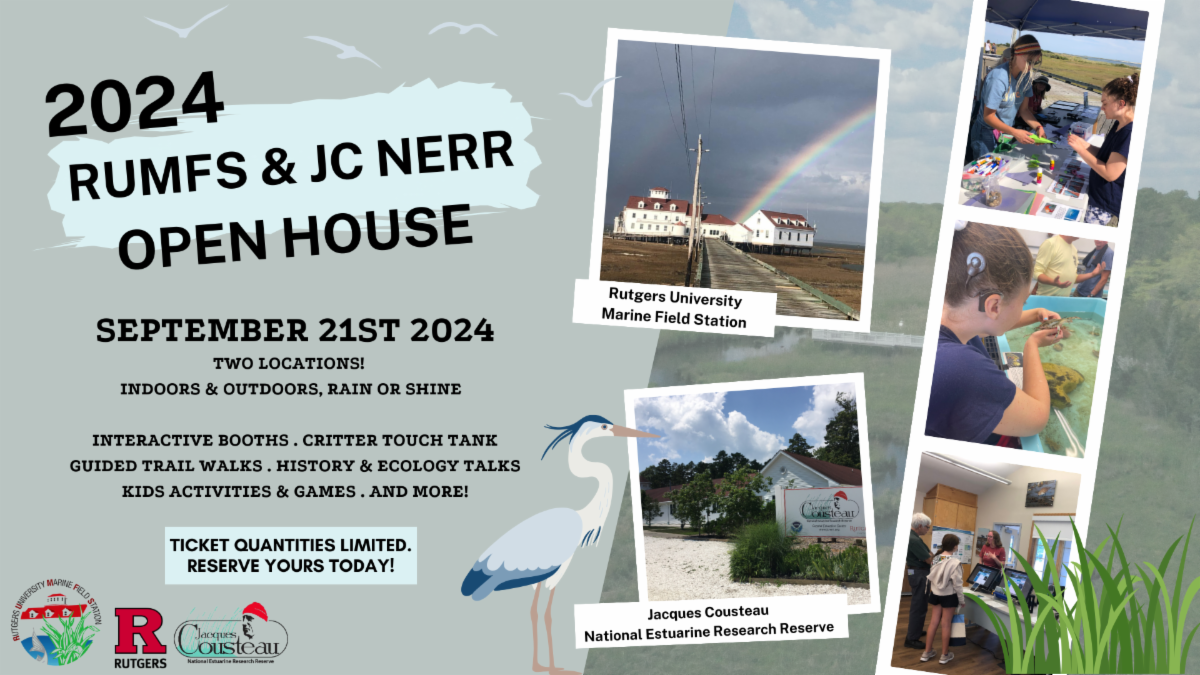
Please note: Tickets are required for the RUMFS location. Learn more and reserve your FREE tickets here.
The amazing world of marine science will be opened up to the public in two locations when the Rutgers University Marine Field Station (RUMFS) and the Jacques Cousteau National Estuarine Research Reserve (JC NERR) each host an Open House on September 21, from 10 a.m. to 3 p.m.
For more than 50 years, researchers have been sampling and observing the marine and estuarine environments of Little Egg Harbor and the Great Bay. Their data paint a picture of a shifting and changing system, illustrating not only the impacts of a dynamic climate but also the vital role these critical habitats play.
Surrounded by salt marsh and poised at the mouth of an active ocean inlet, data collected here is used to inform coastal fisheries, decision-makers, and our local communities about the ways in which our coastal environment is adapting.
Ticket reservations are required for the RUMFS location. No registration is required to visit JC NERR.
Visitors will have the opportunity to meet Rutgers and JC NERR scientists and explore the exciting research in the Mullica River-Great Bay estuary and beyond. Among the activities are interactive booths, critter touch tank, history & ecology talks, guided Grassle Marsh trail walks and several games designed for kids.
RUMFS is a field facility of the Rutgers Department of Marine and Coastal Sciences (DMCS) and marked its 50th anniversary in 2022. It is a working lab with ongoing graduate and postdoctoral level research being conducted year-round. The station is uniquely situated across from the Little Egg Inlet in the Mullica River-Great Bay estuary, one of the most pristine estuaries on the east coast.
JC NERR is a part of the National Estuarine Research Reserve System (created by the National Oceanic and Atmospheric Administration and partnered with Rutgers University) and marked its 25th anniversary in 2022. Its mission is to improve management of New Jersey coastal environments through science, education, and stewardship. It encompasses approximately 116,000 acres in southeastern New Jersey and includes a variety of terrestrial, wetland and aquatic habitats within the Mullica River-Great Bay Estuary.

